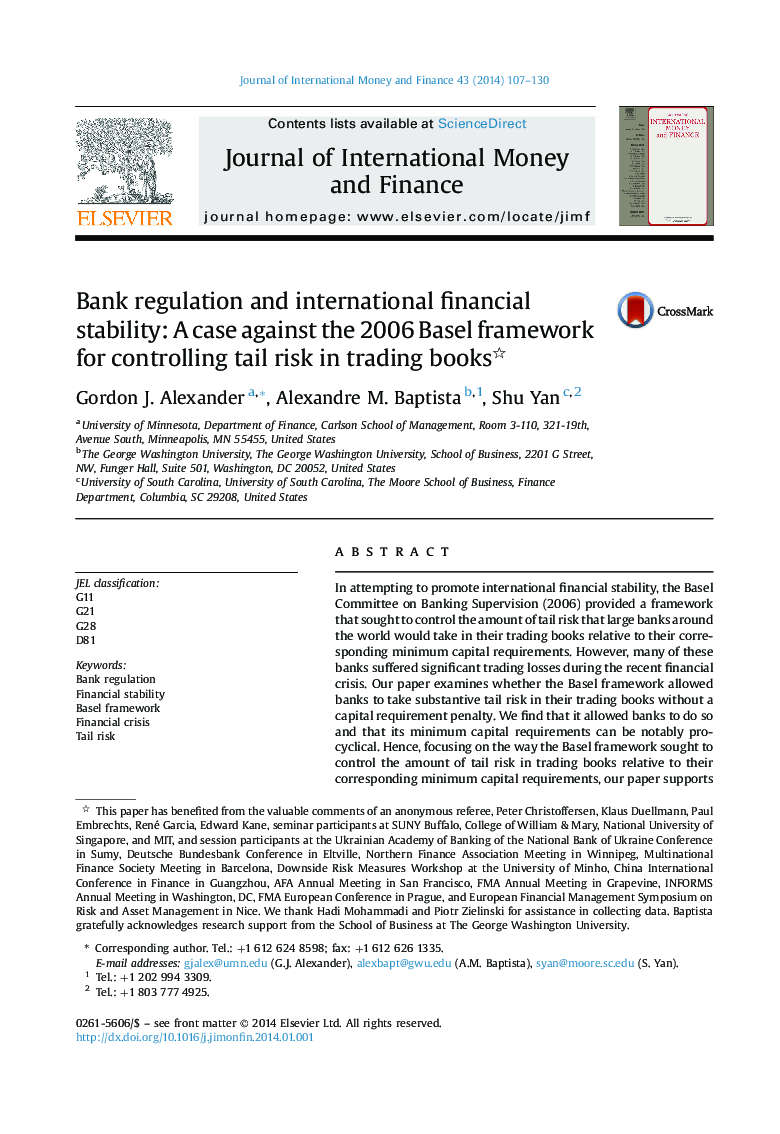| Article ID | Journal | Published Year | Pages | File Type |
|---|---|---|---|---|
| 963804 | Journal of International Money and Finance | 2014 | 24 Pages |
•We examine the 2006 Basel framework for controlling tail risk in bank trading books.•This framework allowed banks to take this risk without a capital penalty.•It set minimum capital requirements that can be notably procyclical.•Thus, the Basel framework was not properly designed to promote financial stability.•We suggest alternative frameworks for regulating bank trading books.
In attempting to promote international financial stability, the Basel Committee on Banking Supervision (2006) provided a framework that sought to control the amount of tail risk that large banks around the world would take in their trading books relative to their corresponding minimum capital requirements. However, many of these banks suffered significant trading losses during the recent financial crisis. Our paper examines whether the Basel framework allowed banks to take substantive tail risk in their trading books without a capital requirement penalty. We find that it allowed banks to do so and that its minimum capital requirements can be notably procyclical. Hence, focusing on the way the Basel framework sought to control the amount of tail risk in trading books relative to their corresponding minimum capital requirements, our paper supports the view that it was not properly designed to promote financial stability. We also discuss alternative regulatory frameworks that would potentially be more effective than the Basel framework in preventing banks from taking substantive tail risk in their trading books without a capital requirement penalty.
